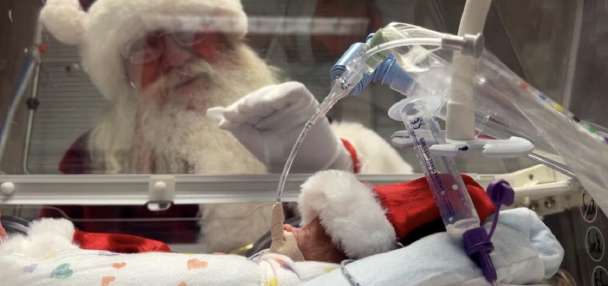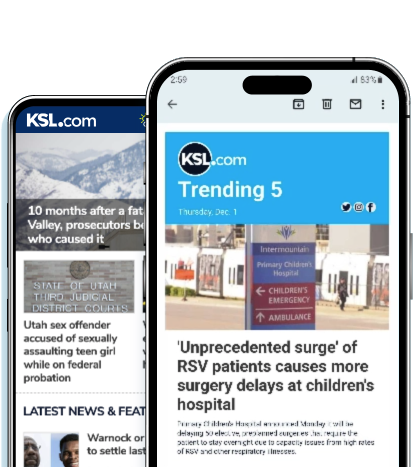Estimated read time: 4-5 minutes
This archived news story is available only for your personal, non-commercial use. Information in the story may be outdated or superseded by additional information. Reading or replaying the story in its archived form does not constitute a republication of the story.
SALT LAKE CITY — January is National Radon Action Month and the American Lung Association wants to spread the message that Utahns should test their homes for radon contamination.
Radon is an odorless, colorless radioactive gas that, without mitigation, poses an environmental risk for the development of lung cancer in those who are exposed to it in lethal amounts.
"A little over 40% of radon tests in Utah find levels above the action level where the (Environmental Protection Agency) recommends that mitigation systems are installed," said Nick Torres, an advocacy director of the American Lung Association. Radon is particularly dangerous because it is a cancer-linked gas and virtually undetectable in any amount without proper testing.
Torres explained that the EPA's action level for immediate mitigation of radon levels is when an environment is tested and radon levels exceed 4 pCi/L (picocuries per liter); however, Torres recommends that Utahns who test their homes and find levels at or exceeding 2 pCi/L should seriously consider consulting a radon expert to plan an appropriate radon mitigation plan.
Torres also advised that households with young children and babies be extra wary as children are more susceptible to sustaining damage to the respiratory system by inhaling radon because they breathe at a much quicker rate than full-grown adults — meaning in an environment contaminated with radon, children will breathe in the gas at a faster rate than adults.
While Utah in 2023 had the lowest rate of new lung cancer cases at just 25.2 cases per 100,000 people, radon is still a risk factor for lung cancer that advocates like the American Lung Association and survivors of radon-induced cancer are continually trying to make Utahns more aware of. Utah, like other mining states, tends to have more radon in its soil because radon is produced by the breaking down of uranium where the radon produced seeps into soil, rocks and bodies of water.
In homes, radon can seep in through cracks in the foundation and water systems to contaminate the air inside the home — according to utahradon.org, 1 in 3 homes in Utah are estimated to have dangerous radon levels.
"The average level is little over 5 pCi/L," said Torres, emphasizing how prevalent radon contamination can be in Utah homes. "Ten, 15, 20 pC/L is not unheard of; rates that are super high increase a person's risk for developing lung cancer. But, you just don't know unless you test."
The science isn't clear on how long and in what amounts humans can be exposed to radon gas without developing cancer. Hence, Torres recommends a proactive approach where households test for the gas regularly and consult a radon expert if radon levels from the testing indicate that immediate action should be taken.
"Radon testing can save your life or the life of your kids," said TJ Mellars, the general manager of Utah Radon Services, the state's largest radon mitigation company. He went on to explain that the risk factor of radon exposure can be compounded with other lung cancer risk factors like smoking to increase the person's chances of getting lung cancer.
Utah Radon Services, the American Lung Association, Hunstman Cancer Institute and several other entities have partnered to provide free radon test kits to Utahns, with the goal of having 21,000 homes tested by Valentine's Day this year. The significance of the number 21,000, Mellars explains, is that 21,000 is the number of estimated deaths each year in the U.S. that can be attributed to radon-induced cancer.
Kerri Robbins, a radon awareness activist based in Utah, didn't even know what radon was several months into her recovery from radon-induced tumors on her lungs and her brain. It wasn't until she saw a nonsmoking cancer specialist after her diagnosis of stage 4 nonsmoking lung cancer that she learned her home had outstandingly high levels of radon contamination, saying, "Our home's level was 31.3 pCi/L — it was like I was smoking three packs of cigarettes a day."
Robbins immediately got in contact with Utah Radon Services and had a mitigation system installed in her home and is thankfully now making a great recovery, visiting her doctor every four months to make sure the cancer stays at bay. Robbins tells KSL that she has since taken it upon herself to inform everyone she can about radon and the importance of radon testing.
"I just feel like God has opened many doors and we're just walking through them doing what we can do," said Robbins, referencing her and her husband's mission to raise awareness among Utahns to get their homes tested for radon. She cautioned that even if you aren't aware of radon, it doesn't mean that it can't affect you — adding that she later found out that half of the homes in her neighborhood tested positive for dangerous levels of radon.
Robbins, Mellars and Torres each agree that the time to test your home for radon is now — to order your free test, visit utahradon.org.








